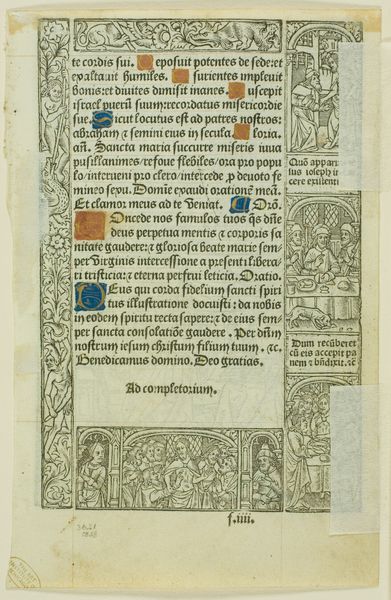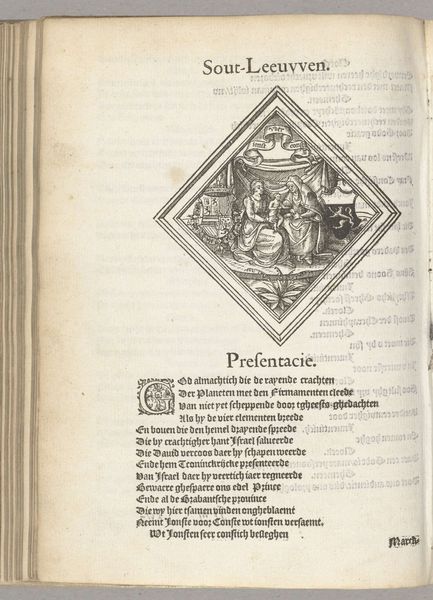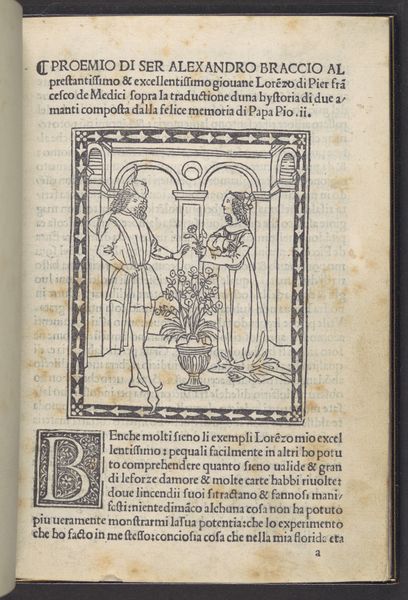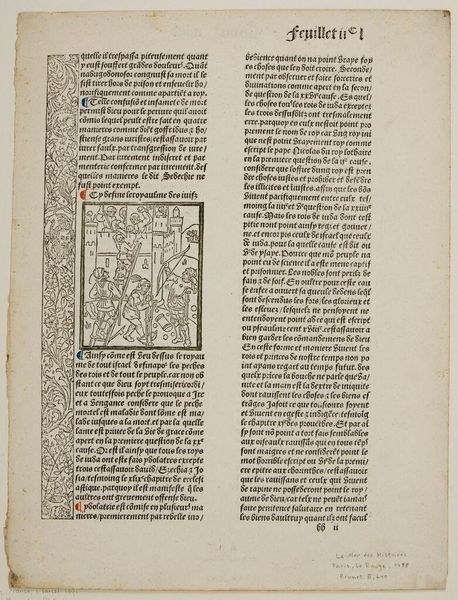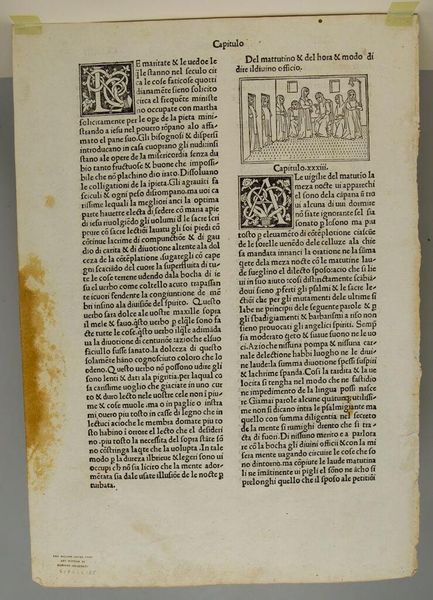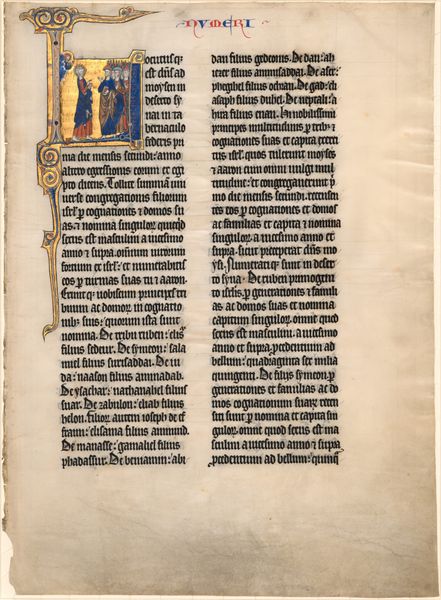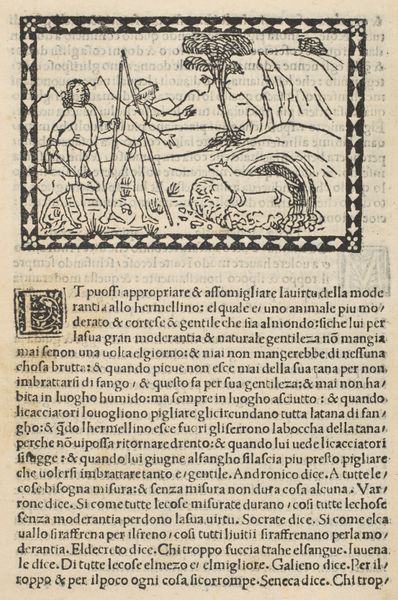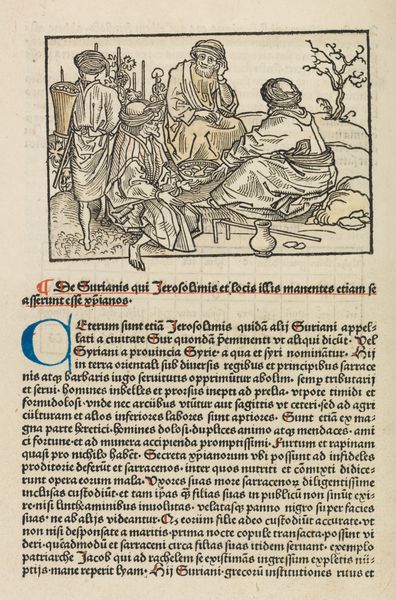
Illuminated Page from a French Book of Hours c. 1505 - 1510
0:00
0:00
painting, print, paper, ink
#
medieval
#
water colours
#
narrative-art
#
painting
# print
#
paper
#
ink
#
coloured pencil
#
coffee painting
#
history-painting
#
northern-renaissance
#
miniature
Dimensions: 5 3/4 x 3 5/8 in. (14.61 x 9.21 cm) (image)
Copyright: Public Domain
Curator: This is an illuminated page from a French Book of Hours, crafted around 1505-1510. Editor: It's remarkable. Even at this scale, the level of detail is quite powerful. The eye is immediately drawn to those vivid blues and reds amidst the otherwise monochrome ornamentation. Curator: Precisely. These Books of Hours, like the one featuring this particular page, functioned as personalized prayer books for lay people. The illustrations weren't mere decoration; they were carefully selected narratives aimed to inspire devotion, reflection, and perhaps even communicate societal values. Editor: The composition directs the eye purposefully. Notice the two miniature scenes, each distinct yet connected by the column of text. The illuminator's use of framing—the ornate borders with human and vegetative figures—adds depth. It's not just about religious narrative, it's about the careful crafting of visual space. Curator: Absolutely. The northern Renaissance saw an explosion in the creation and commissioning of such items, underscoring literacy rates among the aristocratic class, and these were commissioned with the patron’s tastes always at the fore. These artworks represent a fascinating nexus of faith, gender, and class power at the beginning of the 16th century. It would be intriguing to study ownership notations, crests or other indicators of personal connection to the historical patrons, as it shifts from one generation to another. Editor: You can really sense the craft here. Ink, watercolor and coloured pencil are all at play on this small sheet of paper; it seems delicate, but holds a great level of craftsmanship. I want to know more about the hand of the artist themselves. Curator: In that case, the historical record gives the creator to us as Thielman Kerver, who produced some other stunning examples of similar miniature painting. Knowing this really brings focus to what we understand to be an emerging artist who could respond to his environment by fulfilling his duty in art. Editor: Studying Kerver will reveal a great deal about these works, especially within this period of incredible artistic change, thank you for this insight!
Comments
minneapolisinstituteofart almost 2 years ago
⋮
Thielman Kerver was a highly successful Parisian publisher, whose business continued for generations within his family. In the early 16th century, he published several Books of Hours that conceptually followed the segmented border format used in the manuscript shown nearby. For him, the advantage lay in making small metal printing plates that could be recombined and reused. The plates were attached to wooden blocks to make them the same height as the type for the text. The pictorial metalcuts are so densely overpainted that it is hard to see that the images are printed. Kerver inked his types in both red and black in emulation of manuscript text. The main type font, however, is very different from French manuscripts of a few years earlier and signals a shift in orientation from medieval monasticism to renaissance humanism. The text is meant for the knowledgeable, for many of the words are severely abbreviated.
Join the conversation
Join millions of artists and users on Artera today and experience the ultimate creative platform.


